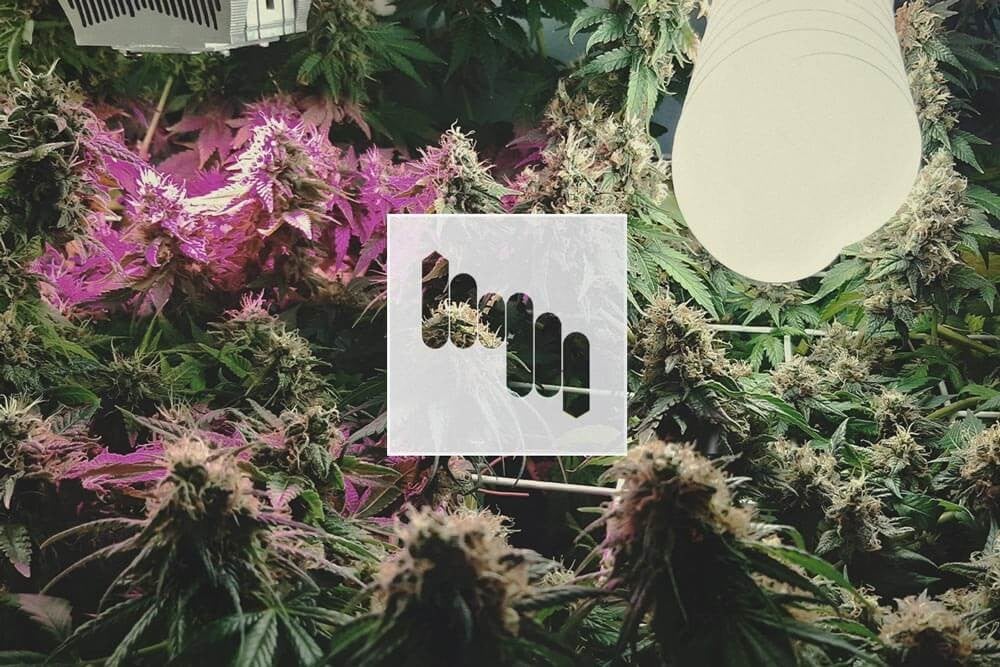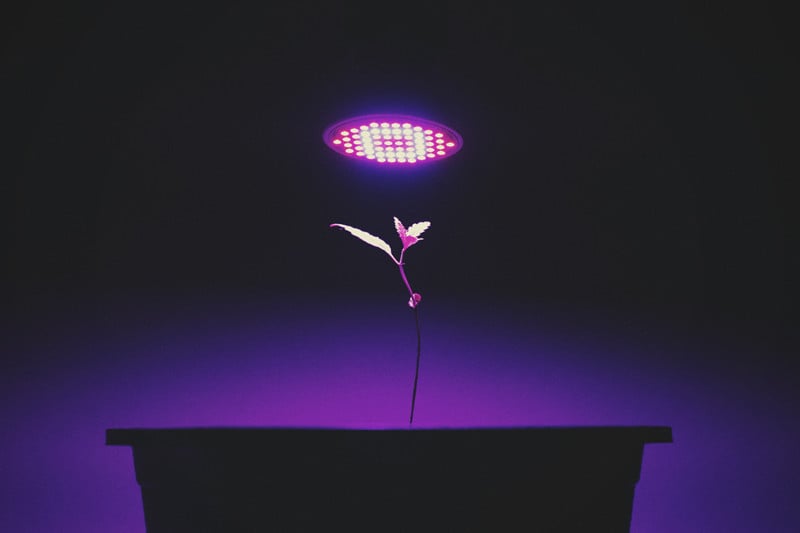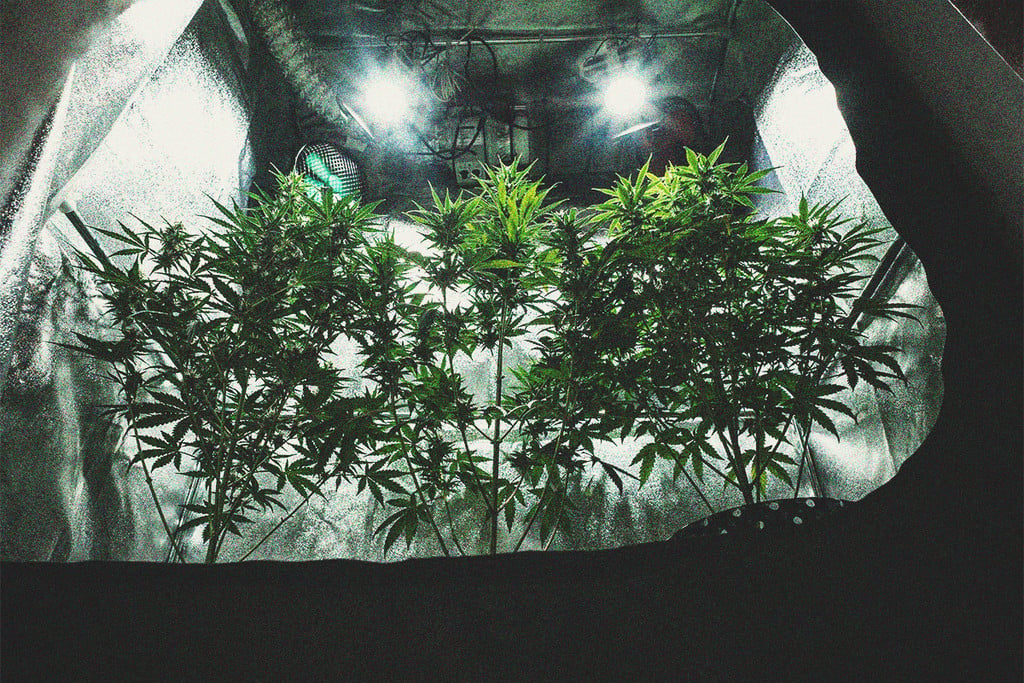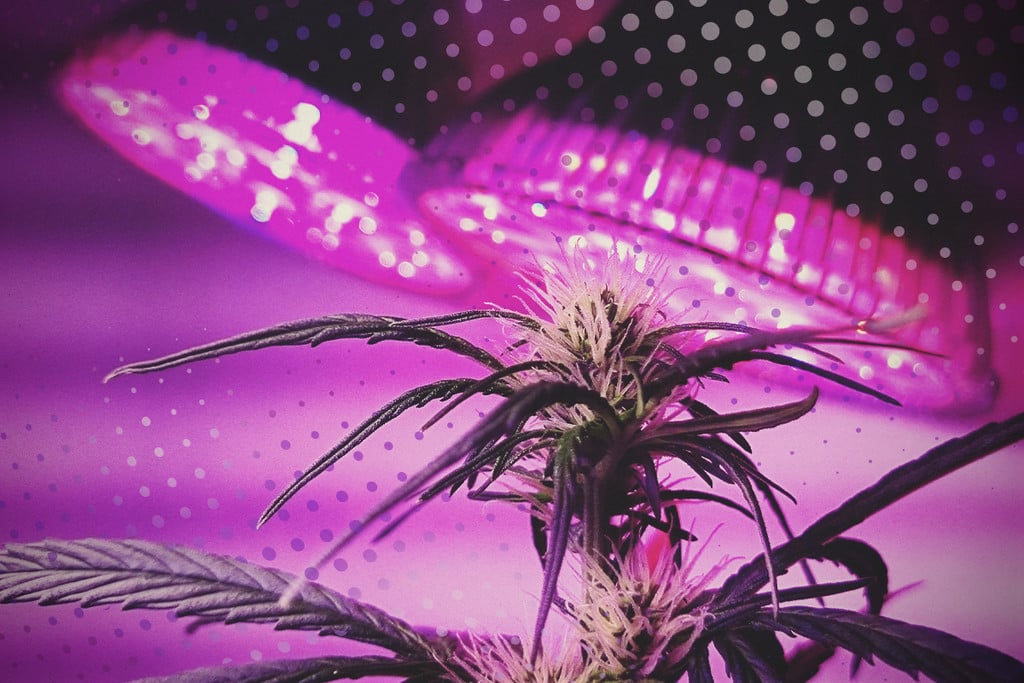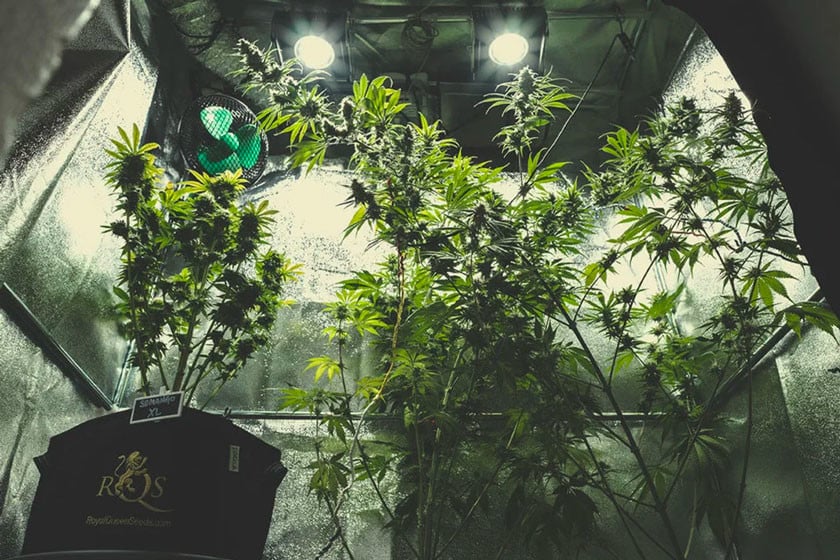.
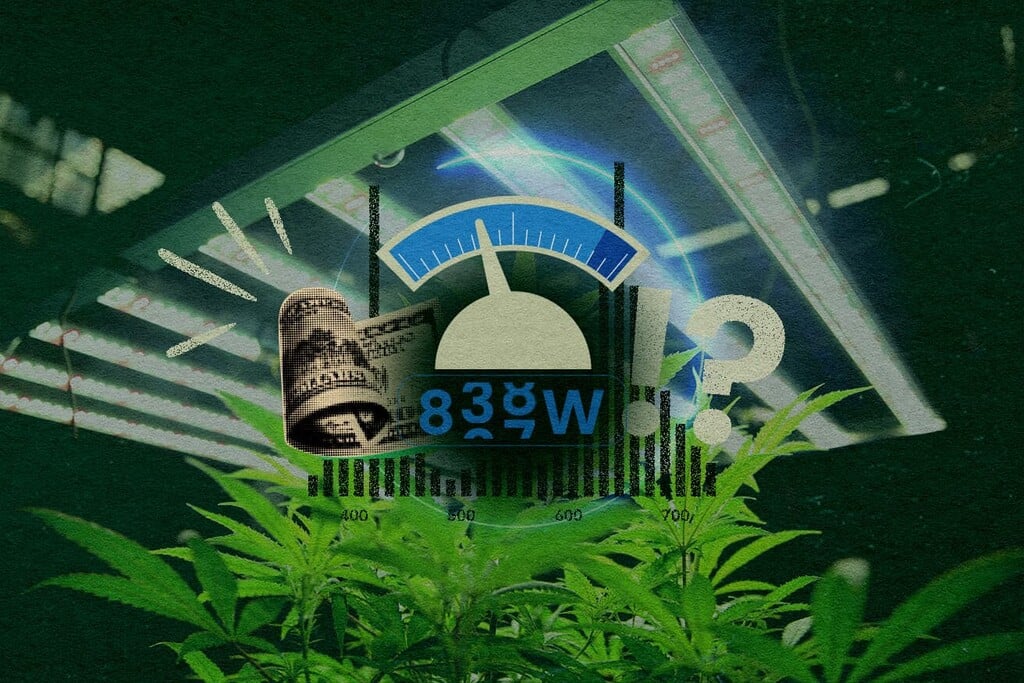
How Much Electricity Do LED Grow Lights Use?
One of the first questions new growers ask is how much do LED lights cost to run, so let’s break down monthly and annual bills based on real-world wattages.
Contents:
- Do grow lights use a lot of electricity?
- How much electricity do led grow lights use?
- How to calculate the electricity cost of your grow light?
- Factors that impact grow light electricity consumption
- How much do grow lights cost to run? (by type and wattage)
- How to lower your grow room electricity bills
- Smart setup, lower bills, better growth
Electricity use is one of the first concerns for anyone growing plants indoors. Whether you're raising a few herbs on a shelf or running a full cannabis veg and flower cycle in a grow tent, lighting is essential—and it's usually the biggest driver of your electricity bill.
LED technology has helped make indoor growing more energy-efficient, but that doesn't mean it's free to run. In this article, we’ll break down how much electricity LED grow lights actually use, their running costs, and how you can optimise your setup to cut unnecessary costs without sacrificing plant health or yields. We’ll also provide some practical tips, calculations, and comparisons to help you take control of your grow room’s energy consumption.
Do Grow Lights Use a Lot of Electricity?
The amount of electricity it takes to run grow lights depends on the type of light you use and how long you keep it running.
High-intensity discharge (HID) lights like metal halide (MH) or high-pressure sodium (HPS), for example, are energy-hungry and produce a lot of excess heat. Meanwhile, compact fluorescent lamps (CFLs) are less power-hungry, yet also less efficient.
On the other hand, light-emitting diode (LED) grow lights are known for their energy efficiency. They use up to 40–60% less electricity than traditional lighting systems, while also producing less heat. This reduces the demand for cooling and ventilation equipment, which further reduces the energy used by your grow room.
It’s important to understand that even energy-efficient lighting will use a lot of electricity if it runs continuously or is too big for the grow space. So, while LEDs are generally better for your electricity bill, you’ll still need to plan your setup carefully to make the most of their efficiency.
How Much Electricity Do LED Grow Lights Use?

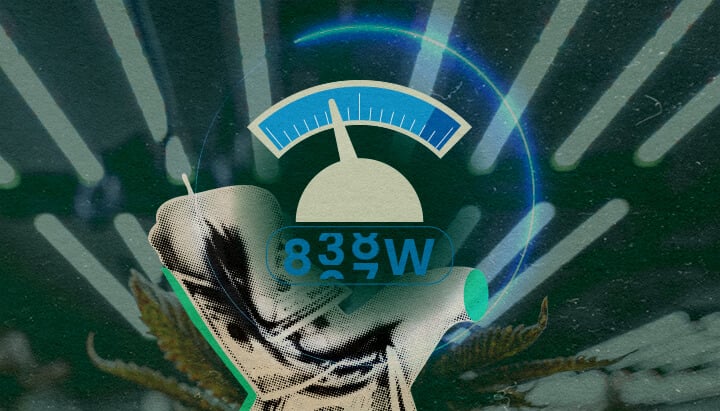
LED grow lights typically consume between 100 W and 800 W per unit, depending on their design and purpose. For example, a small 100 W LED is ideal for seedlings and clones, while a high-powered 800 W panel can support flowering plants in a 1.2×1.2 m tent.
While the numbers might seem straightforward, it's crucial to understand the difference between how manufacturers label their products and what those lights actually draw from the wall.
LED Watts vs True Watts
Manufacturers often label grow lights using a theoretical wattage, based on the maximum output of the diodes inside. This figure—commonly called “LED watts”—is not the same as the actual energy the fixture uses when plugged in.
The more important figure is “true watts” or “power draw”, which reflects a light’s real consumption and is what actually affects your electricity bill.
For example, a grow light manufacturer may advertise a “1000 W LED”, but how much electricity do LED lights use in practice? Usually only 180–200 W of true power draw. This discrepancy can confuse first-time growers and lead to over- or underestimating running costs. Always read the specifications and look for “actual power consumption” or “true wattage”.
Knowing the true wattage of your grow lights allows you to make accurate calculations when estimating the costs of your grow-op.
How to Calculate the Electricity Cost of Your Grow Light?
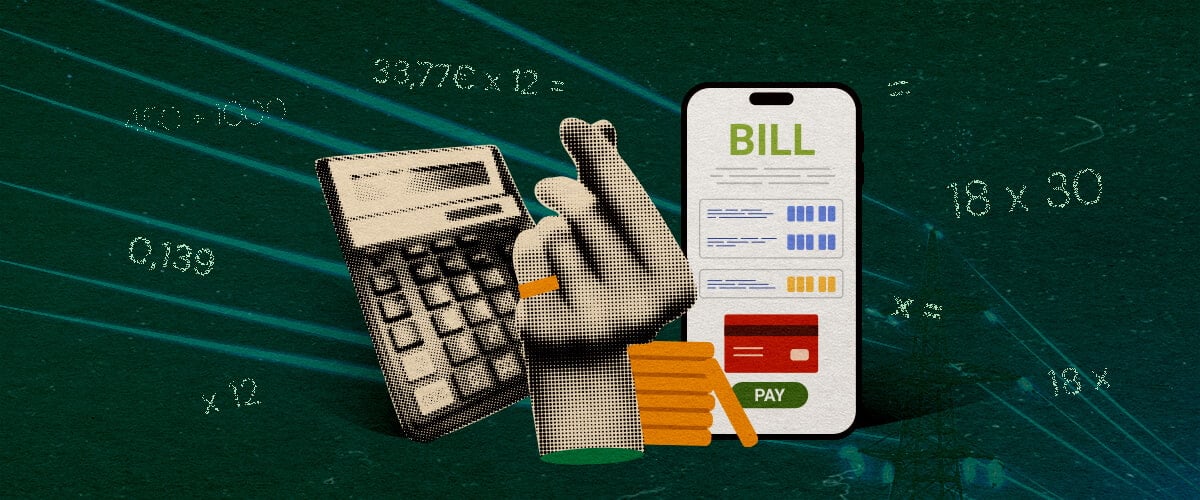

Before plugging in numbers, ask: how much electricity do LED lights use? Use the true-watt figure to drive your cost calculator formula. You can estimate your electricity costs using this straightforward formula:
Monthly cost = (wattage ÷ 1000) × hours per day × 30 × cost per kWh
Here’s a step-by-step breakdown using a common setup:
- True wattage: 450 W
- Hours per day: 18 (standard for vegetative growth)
- Electricity cost: £0.34 per kWh (UK average in 2025)
- Monthly cost = (450 ÷ 1000) × 18 × 30 × 0.34 = £82.62
- Annual cost = £82.62 × 12 = £991.44
The monthly cost of using the same light for 12 hours a day during one month of flowering would be:
(450 ÷ 1000) × 12 × 30 × 0.34 = £55.08
This kind of calculation allows you to compare different lighting setups or accurately analyse whether it’s worth upgrading to a more efficient model to save money long term. For added accuracy, you can also include the costs for ventilation and other electrical devices in your grow room to the equation.
Grow Light Cost Calculator
Seedling Stage
Calculator results
Vegetative Stage
Flowering Stage
Grow Light Cost Calculator
Seedling Stage
Calculator results
Vegetative Stage
Flowering Stage
Factors That Impact Grow Light Electricity Consumption
The cost and energy usage of a grow light aren't only defined by its wattage. Several other elements determine how efficient your lighting system will be in real-world use.
- Type of grow light: LED lights are the most energy-efficient option for most home growers. HID lights are still popular, especially with growers chasing high yields, but they come with higher electricity demands. Fluorescents are more energy-efficient than HIDs but less so than LEDs, and they produce sub-par yields.
- Photoperiod and plant stage: The vegetative stage usually needs 16–18 hours of light daily, while the flowering stage typically needs 12 hours. Longer photoperiods increase daily energy consumption. Plants with long veg and bloom cycles will cost more to support than faster strains.
- Light coverage and efficiency: High PPE-rated LEDs convert more electrical energy into usable light (above 2.5 µmol/J is considered excellent). Efficient coverage also matters—lighting unused corners of your tent wastes electricity. Light hang height, lens design, and reflector quality also impact a light’s coverage and, hence, efficiency.
- Grow space design: A well-designed grow tent with reflective walls and optimised airflow reduces the need for extra lighting and cooling. LEDs also produce less heat, which reduces the grow room ventilation demands, further cutting total electricity use.
- Ambient conditions: Hot rooms require cooling and more ventilation. Cold spaces may need heating. Both affect your power usage. LEDs give you more flexibility because they keep things cooler and steadier.
- Lighting schedule: Many growers leave lights running longer than needed or forget to adjust timers for the different phases of their grow cycle. Using programmable timers avoids this mistake and trims electricity costs without affecting plant health.
How Much Do Grow Lights Cost to Run? (By Type and Wattage)
| Light Type | True Wattage | 12h/day Monthly Cost | 18h/day Monthly Cost | Yearly Cost (Average) |
| LED 450 W | 450 W | £55.08 | £82.62 | ~£991.44 |
| LED 800 W | 800 W | £97.92 | £146.88 | ~£1,470.00 |
| HID 600 W | 640 W | £78.43 | £117.65 | ~£1,170.00 |
| HID 1000 W | 1080 W | £132.26 | £198.39 | ~£1,990.00 |
| Fluorescent 250 W | 250 W | £30.60 | £45.90 | ~£460.00 |
| LED 450 W | |
|---|---|
| True Wattage | 450 W |
| 12h/day Monthly Cost | £55.08 |
| 18h/day Monthly Cost | £82.62 |
| Yearly Cost (Average) | ~£991.44 |
| LED 800 W | |
| True Wattage | 800 W |
| 12h/day Monthly Cost | £97.92 |
| 18h/day Monthly Cost | £146.88 |
| Yearly Cost (Average) | ~£1,470.00 |
| HID 600 W | |
| True Wattage | 640 W |
| 12h/day Monthly Cost | £78.43 |
| 18h/day Monthly Cost | £117.65 |
| Yearly Cost (Average) | ~£1,170.00 |
| HID 1000 W | |
| True Wattage | 1080 W |
| 12h/day Monthly Cost | £132.26 |
| 18h/day Monthly Cost | £198.39 |
| Yearly Cost (Average) | ~£1,990.00 |
| Fluorescent 250 W | |
| True Wattage | 250 W |
| 12h/day Monthly Cost | £30.60 |
| 18h/day Monthly Cost | £45.90 |
| Yearly Cost (Average) | ~£460.00 |
As shown, LED fixtures offer clear savings across both daily cycles and annual totals. Even high-output LEDs (800 W) often cost less to run than older HID systems. For growers running multiple lights, these savings scale quickly.
How to Lower Your Grow Room Electricity Bills
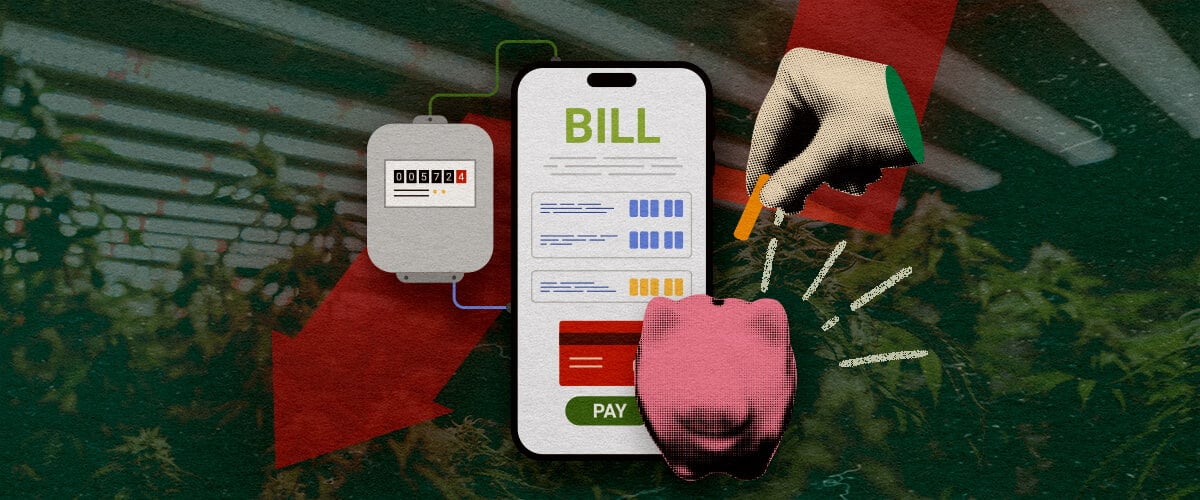
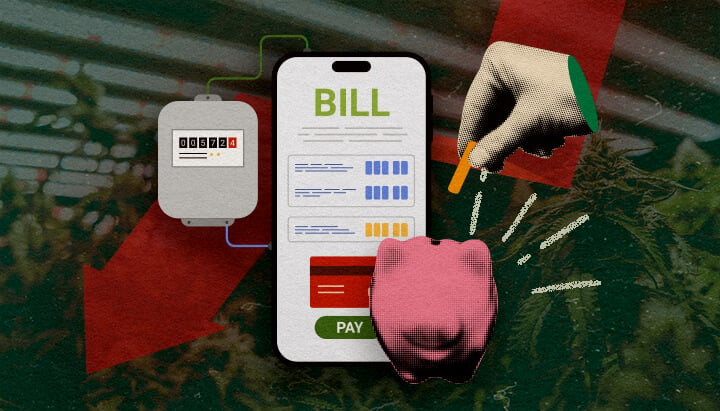
If your grow room electricity bill is steadily increasing, these practical steps can help reduce it without compromising your harvest.
- Switch to high-efficiency LED lights: Look for PPE ratings above 2.5 µmol/J and check the manufacturer’s stated "true wattage". Brands that focus on efficacy—not inflated “LED watts”—are best. Mid-range lights often offer the best balance between upfront cost and long-term savings.
- Use timers and scheduling tools: Automating your lighting ensures you only use electricity when needed. Timers eliminate human error, especially during flowering stages when exact light cycles matter most. Consider adding dimmers or light controllers for even finer adjustment.
- Position lights efficiently: Keep lights at the recommended height for your plant’s growth phase to ensure the highest photosynthetic photon flux density (PPFD). Spacing lights too far apart or hanging them too high leads to waste.
- Group plants strategically: Arrange your plants to fully occupy the footprint of your light coverage. Avoid lighting empty space. Using trellises or ScrOG can help maximise canopy exposure and reduce vertical wasted light.
- Reduce heat build-up: Excess heat from inefficient lights calls for the use of more fans and possibly air conditioning. Use low-heat LEDs and consider passive ventilation where appropriate. Check for hot spots using a thermometer and adjust airflow accordingly.
- Control humidity and temperature: LEDs naturally reduce the need for environmental correction, but sensors and controllers can help optimise fan use, leading to further power savings. Smart thermostats and hygrometers are worth the small investment.
- Regular maintenance: Dusty light panels and blocked fans reduce the efficiency of your grow room. Clean reflectors, lenses, and fans regularly to maintain peak performance. An inefficient light uses just as much electricity, but delivers poorer results.
Smart Setup, Lower Bills, Better Growth
Indoor growing doesn’t have to come with a massive energy bill. When you understand how much electricity LED grow lights use and what influences that number, you’re in a stronger position to plan, adjust, and improve your setup.
Start by reviewing your current lights. Are they using more power than necessary? Could you swap out an old HID for a mid-power LED? Even small changes, like repositioning lights or reducing their runtime during transition periods, can have a big impact.
Most importantly, don’t underestimate the long-term value of investing in efficient grow lights. A good-quality 300 W or 450 W LED fixture will cost more upfront than a budget brand, but it can generate big savings over the course of a year thanks to its efficiency.
Mars Hydro FC3000 – 300 W LED Grow Light
|
|
660-665nm, 2800-3000K, 4800-5000K |
|
|
59.5x54x6.1 cm |
|
|
300W±5% |
|
|
2.85μmol/j |
|
|
855μmol/S |
|
|
Samsung LM301H EVO |
|
|
90x90 cm |
|
|
3.5g/watt |
Buy Mars Hydro FC3000 – 300 W LED Grow Light




























